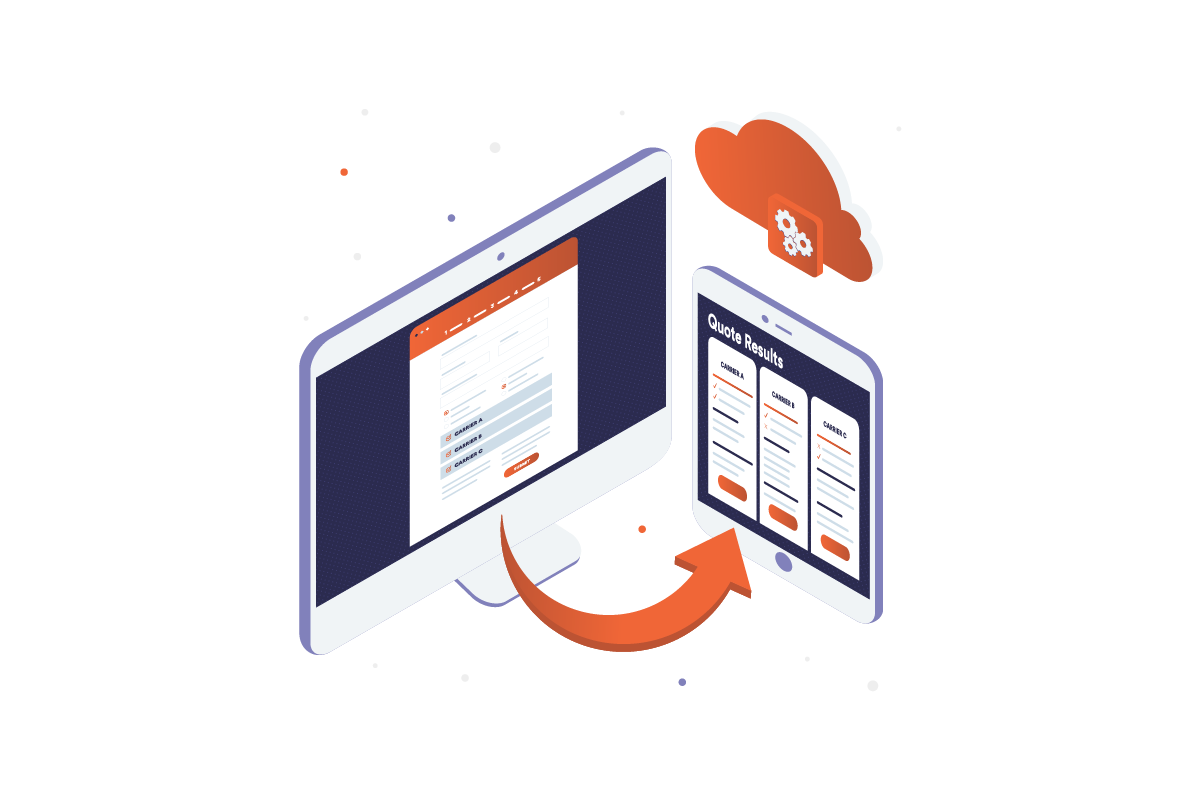Are APIs the Golden Ticket to Seamless Connectivity in Insurance?
The agent portal used to be the epitome of a great tech-enabled relationship between carriers and agents. But then things started to change.
Customers are looking for a more seamless experience, and agents want to limit the number of screens they use to service a single client.
For agents that represent multiple insurance carriers, entering the same information into individual portals is not convenient. Instead, many are turning to platforms that provide access to multiple insurers at the same time.
Most carriers recognize that it’s better to be part of these platforms than to risk being left behind. That’s where application programming interfaces (APIs) come in.
APIs give carriers access to readily available technology platforms like quoting and claims management so they can streamline agent processes and alleviate workflows.
But what exactly does an API do?
To put it simply, APIs are a way for two systems to communicate with each other. Think of it like a phone call. An agent inputs information into a platform about a risk. The API transmits this information to the carrier, which then provides information back.
But having an API is only step one. If it is slow, incomplete, or doesn’t deliver accurate or specific information, it can put an insurer at a disadvantage. For example, agents may prioritize carriers that deliver bindable policies on a quoting platform over ones that provide estimates and require agents to visit an individual portal to get the final value. Many of these differences can come down to the quality of the API the carrier provides.
Carriers can face challenges creating competitive APIs. Some are held back by legacy data and systems. This can require workarounds to build APIs that work with existing policy administrative tools. Though it may require more time, the benefits outweigh the challenges. If APIs are built around risk appetite and underwriting guidelines, carriers will receive a higher volume of quality risks to write. They can get new products in front of agents faster and also increase goodwill with their agent networks by making servicing a client faster and easier.
Here are three tips carriers should consider to avoid API missteps and build integrations that elevate their business.
1. A transparent API is a good API.
Whether you house instructions in a developer portal or maintain them on a well-organized spreadsheet, make sure your documentation is complete, clean and user-friendly. If the documents say the API will behave one way, but it is programmed to behave differently it can lead to confusion and longer implementation processes. For example, the documentation will state that fields like distance to nearest hydrant or fire station are optional; however, the API requires that data to be present in order to get a quote.
Consider segmenting the information into key sections that are important for any integration such as authentication and how to get access to credentials, resources for the API and terms of use. Maintain the same language and terminology throughout and avoid jargon.
Consider providing good samples that show the structure of an API call and response. For example, if you are connecting to a platform that enables quoting, have a sample quote that can be run to test the connection. Samples help clarify what your partner solutions should be sending or receiving. These can go a long way to quicken the integration period.
And don’t overlook response messaging. Inevitably there will be errors and failures during the API integration process. If you do not provide messaging as to why a failure occurred, any platform or solutions provider integrating with the carrier’s API has to search to find the cause of errors. Having an API with detailed messaging enables all parties in the integration to unearth specific issues in the data that might have been missed leading to a better performing API.
2. Find the right balance of information.
An API is like Goldilocks—the right balance of information is required, but don’t provide too much or too little. The most competitive APIs don’t require extreme amounts of data to deliver actionable information. The less information an agent needs to input, the faster they can service the client.
For example, consider an agency that needs to obtain a BOP policy quote for a takeout restaurant. Work with your underwriters to identify the key questions required to return a bindable quote. These are the ones that should be programmed to the API instead of the whole list of possible questions.
It is a balance. The information can’t be so sparse that it isn’t actionable. Perhaps you only require an agent to input three points of data to determine your initial appetite for a risk. The risk is preliminarily approved, but the agent then has to visit your portal to answer more questions to complete the process. After filling out the additional information, it is determined the risk is not right for your company. This ends up being more burdensome than API connections from other companies that require agents to input 10 points of data to definitively determine if there is appetite.
3. Maximize technology partnerships.
The burden is not all on the carriers. Utilize the technology expertise of the platforms you’re integrating with. Most will be more than happy to help you improve your APIs. The better your interface, the easier it is for them to integrate. Your technology partners can provide information on best practices, data structures and implementation methods that make integrations faster and easier while still collecting all the necessary data they need so your company works well on their platform.
If you’re building an API from scratch, consider using a third-party vendor that has a proven track record. The vendor can help create an API that works with a wide variety of integrations, so you don’t have to develop a different API for each new technology partnership.
It’s true, APIs have become a necessity—no longer something that’s nice to have. Agents are embracing platforms that streamline their workflows, driven in large part by the expectations of their customers. But not all APIs are created equal. Carriers that develop interfaces that transfer data easily and provide actionable information will have an advantage. In the digital world where data reigns supreme, insurers that enable seamless flow of data with solutions will be able to grow their business.


